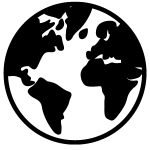Midwifery




Tuition

Duration

Admissions Deadline

Location
Profile
On completion of the BSc Midwifery, you will be recommended to the Nursing and Midwifery Board of Ireland (NMBI) for registration as a Registered Midwife (NFQ Level 8).
The course is designed to meet all the requirements and standards for Midwifery Education (ABA 2005). A broad-based curriculum helps to produce critical, analytical and reflective practitioners capable of functioning in a variety of settings as midwives.
Each year of the course has two components that consist of theoretical modules and midwifery practice modules. On completion of this course you will be able to:
- demonstrate knowledge and skills to provide safe and effective care for antenatal, childbirth and postnatal care
- effectively coordinate, organise and manage midwifery care on your own initiative and in consultation with the multidisciplinary team
- critically appraise and evaluate current research evidence and best practice for midwifery.
Notes
The Student Contribution Charge for all EU students is €3,000. EU tuition may be covered by the Free Fees Initiative.
Application deadline for EU students is February 1. Closing date for late applications is May 1.
Admissions Requirements
High School Diploma with a minimum GPA: 3.7/4.0 plus new SAT: Minimum 1380 or ACT: 29. A minimum score of 640 in SAT or ACT 28 in Maths component or AP 3 is required and a minimum AP score of 3 is required in a Lab Science subject. Applicants are expected to have completed 4 years of English, at least 3 years of Math, (4 years recommended) at least 2 years of History/Social Science and a language and at least 2 years of a laboratory science subject (4 years recommended).
Map
Sorry, no records were found. Please adjust your search criteria and try again.
Sorry, unable to load the Maps API.
Related Programs
Program Information
Cork
Ireland
- 4 years
- Full Time
- On Campus Learning
Additional Information
- Bachelors
Considerations




